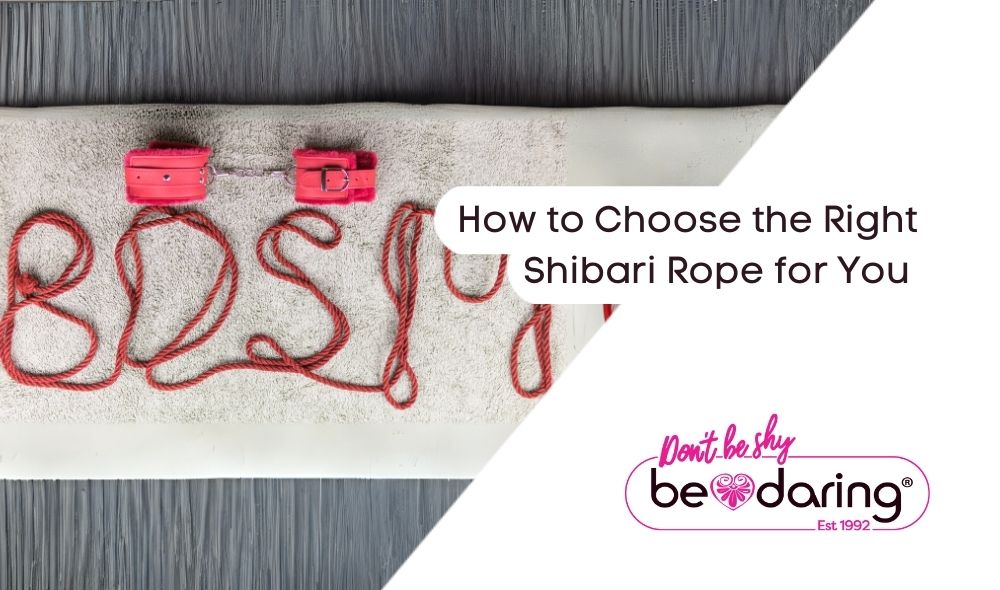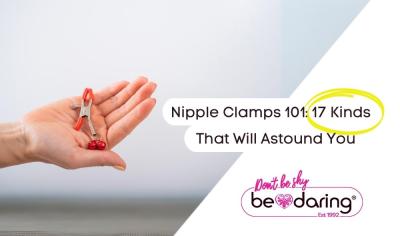How to Choose the Right Shibari Rope for You

When you don't know what you're doing, selecting the correct rope might be a daunting task. There are several possibilities, and determining which is best for you may be tedious, to say nothing of pricey.
This article aims to help you make an educated selection when choosing your first bondage ropes.
There are three major considerations when purchasing rope: fibre, diameter, and length.
Fiber
The fibre of your rope brings you to your most critical choice. Fibre dictates the features of the rope; its appearance, strength, texture, handling, and even scent are all dependent on the fibre. This may have a significant influence on how you knot and what types of scenarios you have.
A group of riggers of various kinds will most likely bring four types of rope into the room: hemp, jute, nylon, and MFP (multi-fiber polypropylene). These are the four most common fibres in rope bondage.
Hemp
Hemp shines out for its suppleness. That is not to be confused with dowry. Well-treated hemp rope will slide across the skin with a strong, delicate touch. It exudes stability, dependability, and masculinity.
Hemp ropes also have a pleasant earthy fragrance. This makes hemp ropes a popular choice for many bottoms who like sensuous rope play, as well as many tops.
Hemp fibres flex more than other ropes. This implies that hemp ropes will fold over the curves of the skin or surface, allowing it to breathe while remaining in place with minimal stress. This makes it simple to knot complex patterns over the body with simply tensioning. Pauses to tie complicated knots to hold everything in place do not disrupt the scene's pace. Hemp ropes are the most popular item in this category. Hemp knots are quite secure.
The ropes are machine washable and dryable. After drying, the ropes must be stretched hard to restore their length. However, hemp ropes will deteriorate with each wash.
Hemp's suppleness is not without drawbacks. Under strain, the ropes will flatten against one another. This has no practical implications while doing bondage, although it does imply that intricate knotwork will clump rather than maintain its shape. This is absolutely irrelevant in techniques like Shibari bondage, which do not use knots.
Hemp fibres tend to be heavier. This is an indication of density, which indicates the strength of the rope (more on that later), but it may also make the changeover unappealing for someone used to rigging with thinner ropes.
In person, hemp looks amazing, but in images, it can appear gritty and dreary unless properly lit. Hemp ropes are more expensive than synthetic fibres since they are made from natural fibres that must be cultivated, processed, and conditioned.
Jute
Hemp's equivalent is jute, another natural fibre rope. Almost every aspect of their personalities differs.
High-quality jute rope starts off quite stiff. This makes it a popular rope among sadists and masochists looking for a bit more edge in their play.
The strength of the ropes also ensures that elaborate knots keep their shape well in jute rope. Overall, jute rope is a photographic whore. The natural shine of the ropes looks great on camera. Jute fibre weighs almost nothing. This adds significantly to the rigging procedure. The movements grow more fluid and graceful. The weight also applies to individuals who wish to do outdoor bondage. A jute kit weights significantly less than another fibre kit on a long walk.
My jute ropes are likewise quite durable due to their tight weave, however other vendors should be avoided. Traditional jute is loosely weaved, which means the ropes have an extremely short lifespan. When buying jute, it is critical to enquire about the weaving. Jute ropes provide enough traction to keep them in place, but not as much as hemp. When rigging with jute ropes, it is critical to maintain proper tension.
Jute also takes additional care while washing. To prevent shrinking, jute ropes must be stretched and cured under tension.
Nylon
Nylon is a synthetic oil-based substance. This reduces the cost of producing nylon to the level of grass. As a result, nylon rope is less expensive than jute and hemp. Nylon fibre also glows wonderfully. This makes it by far the best option. Like other polymers, this rope is extremely durable. It takes to water with ease and feels refreshing on the skin on hot summer evenings.
The ropes do not flatten at all. They keep their form well. This makes them perfect for ornamental knots. Unfortunately, they lack the grip of natural fibre ropes, making tension-based Shibari bondage systems considerably more difficult to execute, since nylon ropes tend to slip and slide all over the place unless handled skilfully. Many bottoms describe feeling detached from nylon ropes, as opposed to hemp and jute. In terms of weight, nylon is comparable to hemp. Nylon ropes are extremely robust.
Strength
We assess a rope's safe working load by first determining its breaking strength. The breaking strength of a rope is precisely what you'd expect: it's the average weight at which the rope broke during testing. This is around 300 pounds for one strand of 6mm jute, 400 pounds for one strand of 6mm hemp, 1100 pounds for 6mm MFP, and 1200 pounds for one strand of 6mm nylon. So far, so good; nevertheless, relying on that figure spells danger. For one thing, it is merely an estimate. Nobody can tell you the breaking strength of a rope without first breaking it. It also does not take into consideration the effects of wear, conditioning, momentum, and a variety of other factors that might reduce the rope's strength. We compute the safe working load by dividing the breaking strength by ten.
The safe working load for 6mm jute is 30 pounds, 40 pounds for hemp, 110 pounds for mfp, and 120 pounds for nylon.
That may sound negative to those considering going into suspension with natural fibre rope, but realise that we normally double our rope while conducting bondage. This twice the safe working load. We also run it back and forth from the hard point once or twice as a standard procedure, distributing the weight across numerous spots along the body. Except for certain tough suspensions, the maths usually works out.
However, you should always bear this in mind while lifting someone into the air.
Diameter
Diameters commonly range from 4mm to 8mm. Three elements determine diameter selection: manoeuvrability, handling, and safety/comfort. Thicker 7mm and 8mm ropes are frequently selected due to their higher strength. This is not a theoretical factor because the safe load for natural fibre rope is significantly lower than that of synthetic fibre. An 8mm piece of hemp rope has a breaking strength of about 800 pounds and a safe load of 80 pounds. Definitely an improvement over 6mm.
People who favour thicker rope report that the greater thickness helps to spread pressure over a larger area, resulting in more durable bondage.
While all of this is true, the thicker the rope, the stiffer it becomes. This is a disadvantage in complex designs where abrupt rope twists look amazing. It also acts as a disadvantage when doing hand or face bondage, when accuracy is more crucial than area covered.
Thicker ropes weigh more. This makes it more difficult to manage. Still, 8mm hemp might be an excellent choice for suspension lines, particularly for novices with minimal funds. On the opposite end of the range comes thin rope, such as 4mm. This rope is extremely flexible, yet it is quite weak. When stretched, its thin surface can cut into the flesh.
Most riggers now choose 6mm rope. It offers the optimum balance of strength, surface coverage, weight, and flexibility. Some jute enthusiasts who are serious about performance bondage choose 5mm jute over 6mm jute for the greater handling experience provided by the lighter 5mm rope.
Length
The length of your rope is primarily determined by who you are, what you do, and for whom you do it.
The Japanese think that length depends entirely on the rigger. They determine the optimal length of the rope by multiplying the length of one's entire arm span with arms spread by four. With the rope folded over, you can easily draw it through any knot in two smooth hand strokes. This is usually measured in lengths of 7 to 8 meters (23 to 27 feet), with 12.5 foot ropes used when the whole length is not necessary.
This method works particularly well on slim Japanese bodies.













